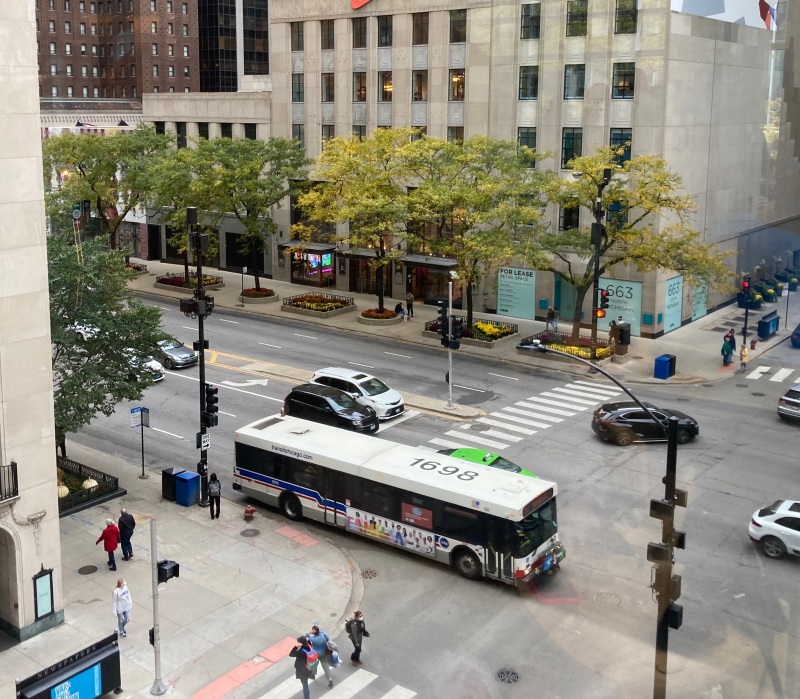Today a reporter from a car magazine emailed to ask whether I think U.S. public transportation is heading for a death spiral where “folks are too scared to use it, ridership falls off, investment/budget shrinks, the systems get worse, etc. It doesn’t look very good for our post-COVID future… I just wonder if the reduction in public transit [use] is only exacerbating the logistical, environmental, and economic issues that currently plague the automotive industry.” It’s good to hear that at least one car journalist is thinking about these things.
Since he’ll probably just have room for a sound bite of my reply, here’s my full response, with a little additional material added to round out my thoughts.
I’m fairly optimistic about the future of public transportation. The pandemic is approaching a stage where riding transit isn’t much of a COVID-19 safety risk for non-vulnerable vaccinated people, and I’m guessing it won’t be too long before there isn’t even a federal mask mandate for public transportation. Fortunately, federal stimulus money has been available to bail out transit systems while ridership has plummeted, but people are slowly coming back to trains and buses, a trend that will surely accelerate as more offices reopen.
Here in Chicago, transit agencies are taking the long view and getting creative about coaxing people back onto public transportation with deep discounts on passes, and the CTA is eliminating its 25-cent transfer fee. The South Shore Line commuter railroad between Chicago and northwest Indiana is actually offering free eastbound trips all day on weekdays. The agencies are smart to realize that getting people comfortable riding again is more important than revenue in the short term.
This trend will also get citizens and decision-makers thinking more about the importance of transit as a public good that should receive heavier subsidies. (Lord knows U.S. driving infrastructure is heavily subsidized.) So we might see, for example, Illinois reducing or eliminating the current state requirement that transit systems recoup 50 percent of operating costs via fares.
One thing that’s probably helping somewhat is that during the pandemic ride-hail (Uber and Lyft), which is a massive money-loser, propped up by venture capital, has gone up in price, better reflecting what it actually costs to operate. Public scooters and e-bikes are becoming more popular, which will may nibble on transit ridership a bit. But on the other hand they make transit more convenient by providing “first- and last-mile” trips to train stations.
In Chicago, one major threat to transit ridership is decreased safety and quality of life on transit as ridership has declined, first due to ride-hail, and now COVID, which means fewer “eyes in the cars.” We’ve seen a spike in violence on the CTA, including cases of random attacks apparently involving mental illness, as well as nuisance issues like littering, smoking (tobacco and pot), and people sleeping across multiple seats.
We should be addressing these issues by following San Francisco’s lead by deploying unarmed transit ambassadors, who have proved successful in encouraging rule compliance with a much lower risk of escalation to violence than cops, and doing outreach to people in need of social services; increasing funding for mental health services (Chicago just added $6M for mental health in our 2022 budget), and getting serious about tackling our homelessness crisis (how about piloting a tiny homes program with wraparound social services, like LA is doing?), so residents aren’t forced to seek shelter on trains.
We've heard some comments and read some social media posts recently reporting issues with @CTA reliability, including unusually long waits for buses and trains. What's been your experience with this in recent months? pic.twitter.com/o70EloOSiI
— Streetsblog Chicago (@streetsblogchi) October 19, 2021
And, of course, if we want to rebuild and expand transit ridership, we need to make sure public transportation is an efficient and reliable travel mode. Lately I’ve been seeing reports on social media of unusually long waits between buses and trains. (We’ll be reporting on that issue on Streetsblog later this week.) In addition to tackling that hopefully short-term problem, we need to make transit a more appealing option in the future by investing in higher-frequency train and bus service, as well as building many miles of car-free, camera-enforced bus lanes.
But overall, my sense is that, as Mark Twain might have said, reports of the death of transit have been greatly exaggerated.






